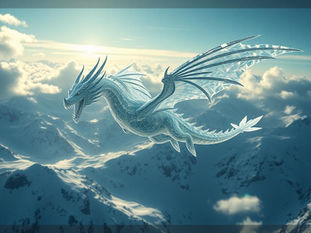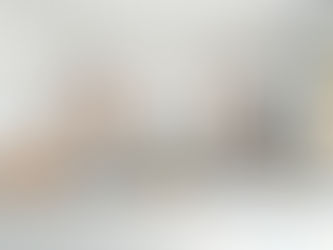
Midjourney V7 is Coming: Get Ready for New Features, 3D, Video, and More AI Art News
May 3
5 min read
0
1
0

Get ready for exciting changes in the world of AI art! We recently saw some big updates and teasers about what's next, especially for Midjourney. Version 7 is getting closer, and there's news about 3D features, video, and other cool tools coming soon. Let's dive into the latest developments and see how AI is shaping the creative space.
Midjourney V7: What to Expect
Midjourney's next major version, V7, is expected to launch soon. Early signs point to several key improvements:
Improved image detail and quality.
Better understanding of your text descriptions.
The ability to use the Sref function (style reference) on objects, not just characters, to maintain a consistent look.
Simplified process for creating recurring characters or objects across multiple images. While possible now, V7 aims to make it much easier.
Exploring 3D and Video in Midjourney
The Midjourney team is also working on adding new capabilities beyond static images:
3D Features: They are developing ways to do 3D modeling directly within Midjourney. This could let you change camera angles or crop images easily after generating them.
Video Generation: It looks like video might finally be coming to Midjourney. Reports suggest tests are happening, and they might partner with other companies to bring this feature faster.
Managing different styles, character references, and soon maybe 3D angles and video clips can add layers to your workflow. To help streamline creating consistent images and managing variations, consider checking out a tool like the Midjourney Automation Suite from TitanXT. It can help you keep track of your best prompts and styles.
Recent Midjourney Updates You Can Use Now
While waiting for V7, two features have recently been released:
Describe Function on the Web: The Describe tool, which takes an image and suggests prompts you could use to create similar images, is now available directly on the Midjourney website. Before, you needed to use it on Discord.
Mixing Moodboards: You can now combine multiple "moodboards" (collections of images that create a specific style) even when using the Sref feature. This is useful for combining different visual styles, like a photorealistic look with a low-angle camera view, or an animated style with a high-angle view.
Other AI Tools Making Waves
It's not just Midjourney advancing. Several other AI platforms are adding new features:
Freepik Lip Sync
Freepik now offers a lip-sync feature. You can make characters you generate speak using text you type, an audio file you provide, or by recording your own voice directly. This feature works on videos previously created on Freepik.
CREA Chat
CREA is introducing a conversational interface called CREA Chat. It's designed to let you access all of CREA's features through a chat window, making it a new way to create content using their tools.
Grok 3 from Xai
Elon Musk's Xai is working on their next AI model, Grok 3. It's designed as an alternative to models like GPT-4o and Gemini. Grok can analyze images, answer questions, and might even get a voice mode on X. Musk aims for Grok to be more neutral than other models, and documentation mentioned an "unhinged mode" for provocative answers.
Pika Turbo Mode
Pika has launched a Turbo mode. It generates videos three times faster and uses fewer credits while keeping the quality the same.
UMA Dream Machine 4K Upscale
If you create videos with UMA's Dream Machine, you can now increase their resolution up to 4K. This is available for videos originally made in 720p or 1080p.
With so many tools and features emerging, keeping your creative process organized is key. Explore how automation can help manage your AI image generation jobs with the Midjourney Automation Suite by TitanXT.
AI and Copyright: A Growing Discussion
The US Copyright Office recently discussed AI's role in creative work. They stated that using AI tools to help in the creative process doesn't automatically mean the work isn't protected by copyright. However, copyright is based on human creation. Just typing simple prompts isn't enough to claim a work as original and protected.
The Office clarified that the creative arrangement of elements generated by AI *can* be protected, but the content created *solely* by a machine cannot. This is part of an ongoing conversation about AI's impact on artists and how copyright laws apply. The Office is not planning a specific copyright just for AI-generated works and warned about potential risks for human creators, though they said the impact on jobs is hard to guess.
First AI Film Festival
A film festival specifically for works created with new technologies, mainly AI, is set for April 11-12 in Nice. It's called the World AI Film Festival and will feature a notable jury including famous filmmakers.
Testing Mystique 2.5
I recently tested Mystique 2.5, an image generator available through Freepik. A helpful feature is that it can generate images in cas (presumably a specific format or resolution), meaning you might not need to use other tools like Magnific for upscaling afterward.
Mystique 2.5 Results
Here are some outcomes from my tests:
My first attempt with a prompt resulted in a funny image of a young man wearing what looked like a tank top.
A second try with the same prompt gave a very high-quality rendering.
Comparing images generated on Mystique to ones generated elsewhere shows the progress in photorealism being made across different platforms. I also tested Mystique with more fantasy-style prompts and abstract smoking effects, with quite good results. Seeing these outputs made me think about creating a series of images for a short film.
Generating a Series
To create a series while keeping a consistent style using Mystique and Freepik, you can use an initial image as a style reference. You click "reuse style reference," and it applies the look of your chosen image to new generations based on updated prompts. I found this worked well for maintaining a strong resemblance, even at the character level, across different images in the planned series.
Turning these image sequences into video can be done directly on Freepik or using tools like Kling. You'll upload your images and add a prompt describing the action or character, like "a smiling girl is dancing on the beach." For music, I used Audio to generate a Latin party track.
Featured AI Video: "Roommate"
One video that stood out to me this week is called "Roommate," made by L. The director shared details about its creation process. They used Chat GPT to refine text prompts before using VEO, Google's video generator. About 700 clips were generated to end up with 125 used in the final video. Editing took a day and a half, and sound mixing partly involved AI tools like Eleven Labs.
The director feels AI offers great flexibility and makes testing and replacing shots cheap and easy. However, they stressed that AI doesn't replace human ideas; it makes it possible for a single creator to produce a full film. The challenge shifts from having a budget to choosing the best ideas from endless possibilities. The quality of the final image still depends on how skilled the user is.
Moving forward, the director thinks people will care less about whether a work used AI, and more about the final result.
As AI tools become more powerful and complex, finding ways to manage your creative process effectively is important. Don't forget to explore the Midjourney Automation Suite from TitanXT to help streamline your work and focus on the creative choices that matter most.
I hope this look at the latest AI art news was helpful! Share your thoughts and your own AI art creations in the comments below.






